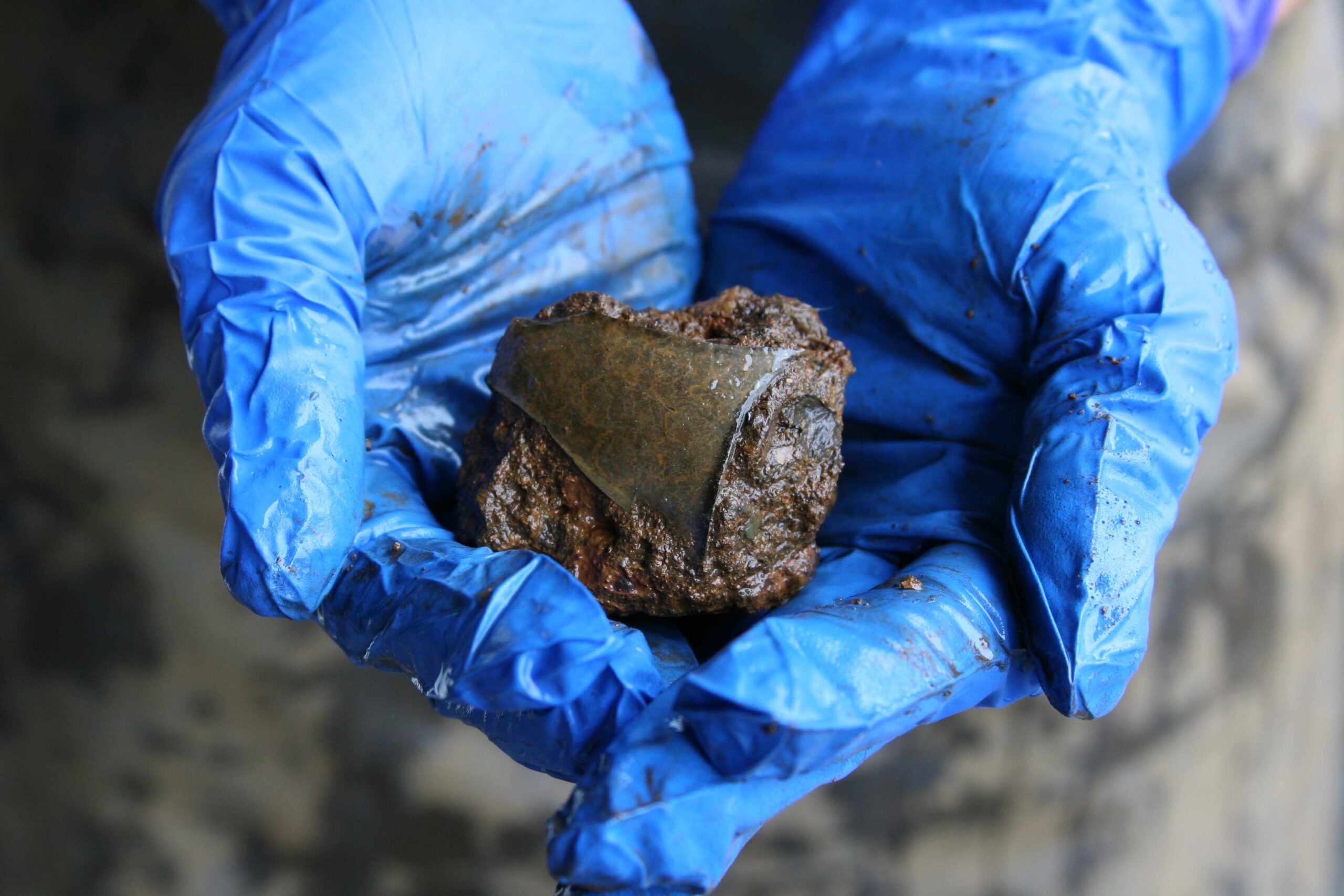This past week, the Monitor conservation staff began screening concretion and corrosion products removed from the interior of the turret over the last 10 weeks (see previous posts and video links on the main page). As with any archaeological excavation, we want to make sure that even small objects and fragments are recovered for future study and interpretation. This being said, we have opted to use a process called wet screening. Under this technique, material types of various sizes are separated out while at the same time washed by a steady stream of water to remove loose sediment and rust. The additional washing makes the identification of small artifacts easier and speeds up the overall screening process.
In the two image below you can see Elsa and Gary working at screening stations, which were fabricated by Gary.
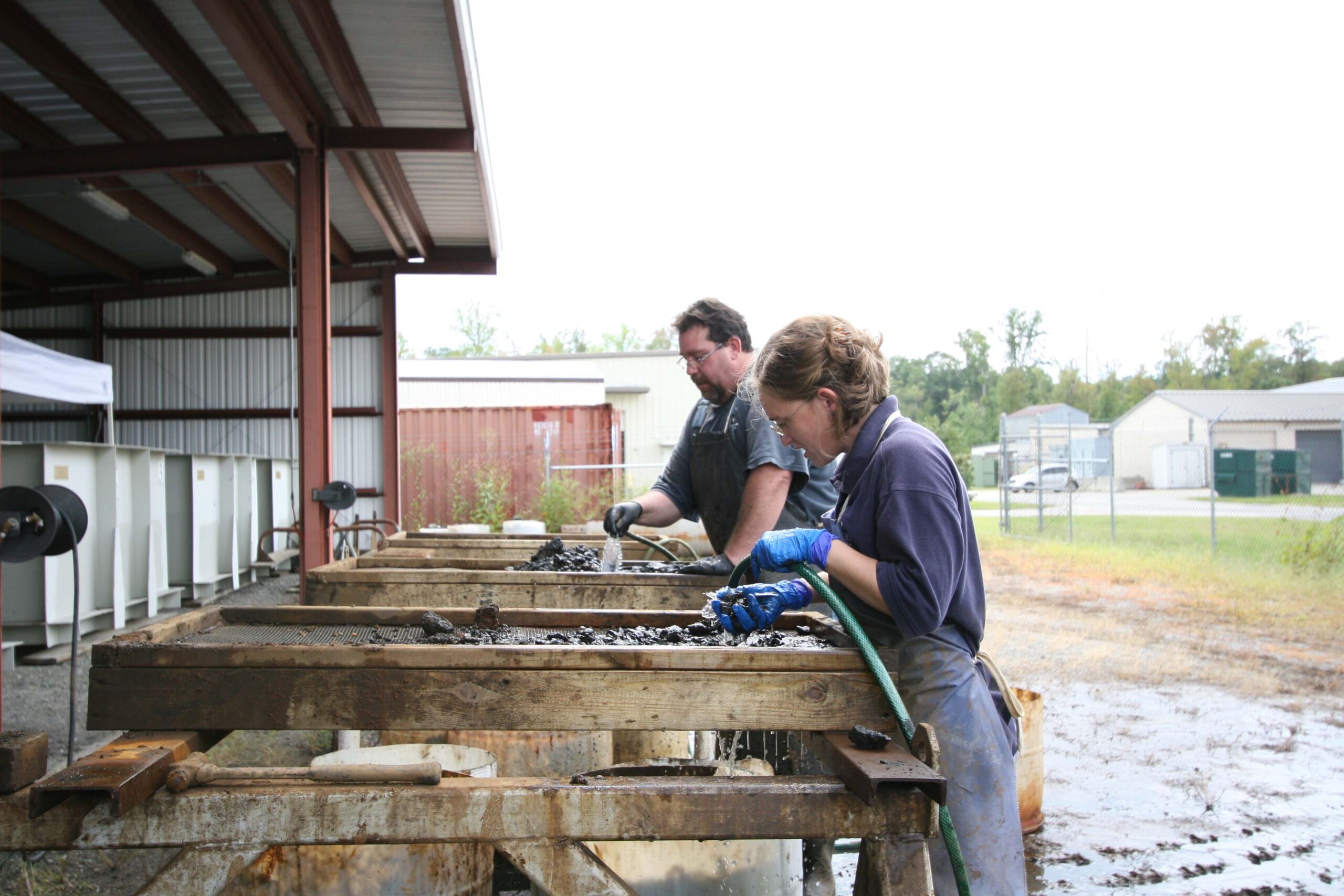
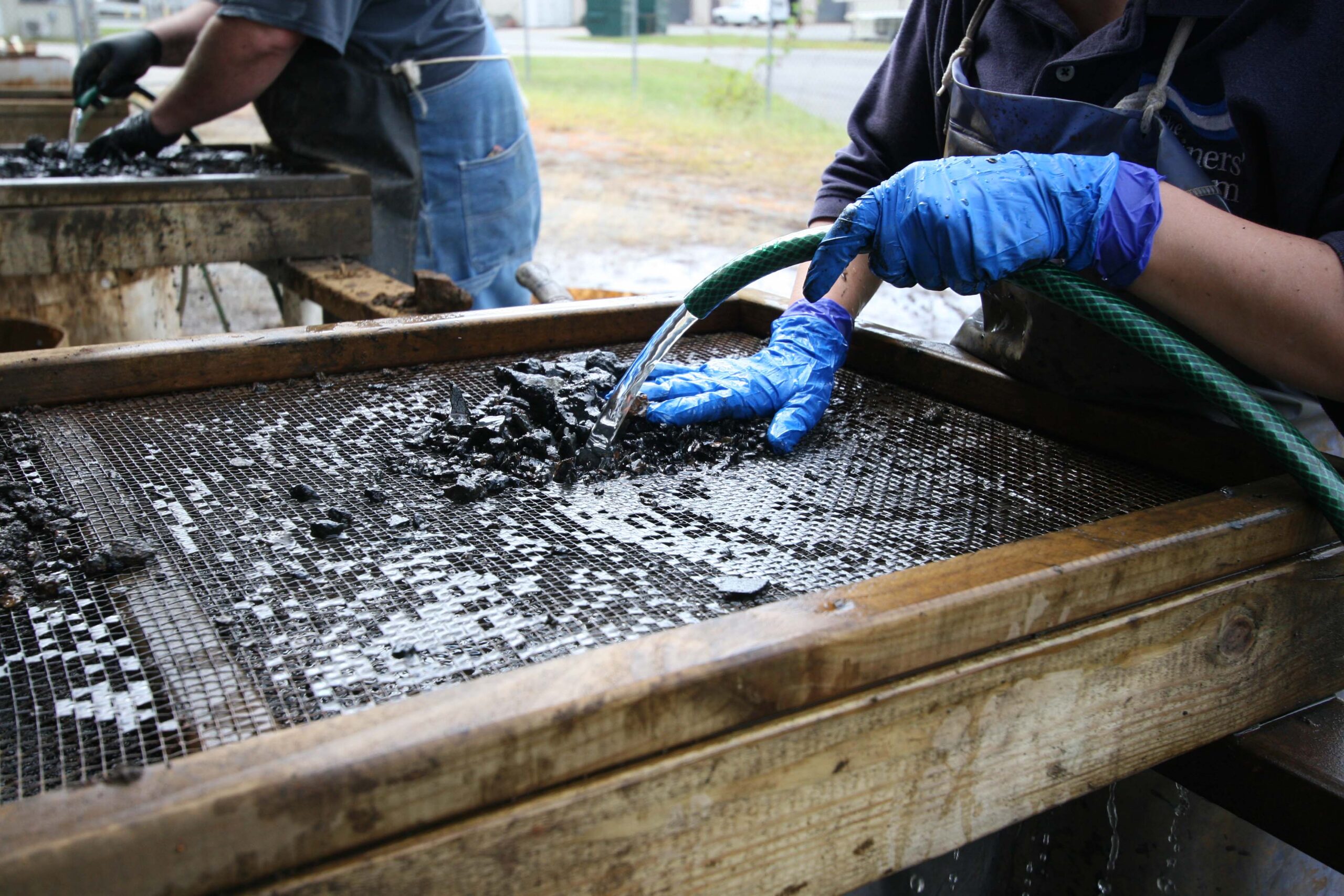
In the image above you can see the average size of the materials which are too large to pass through the top screen to the smaller one underneath it.
In the image below you can see Dave and Gerry screeing fine marterials though the smaller lower mesh. Notice the size difference compared to the materials on the top screen!
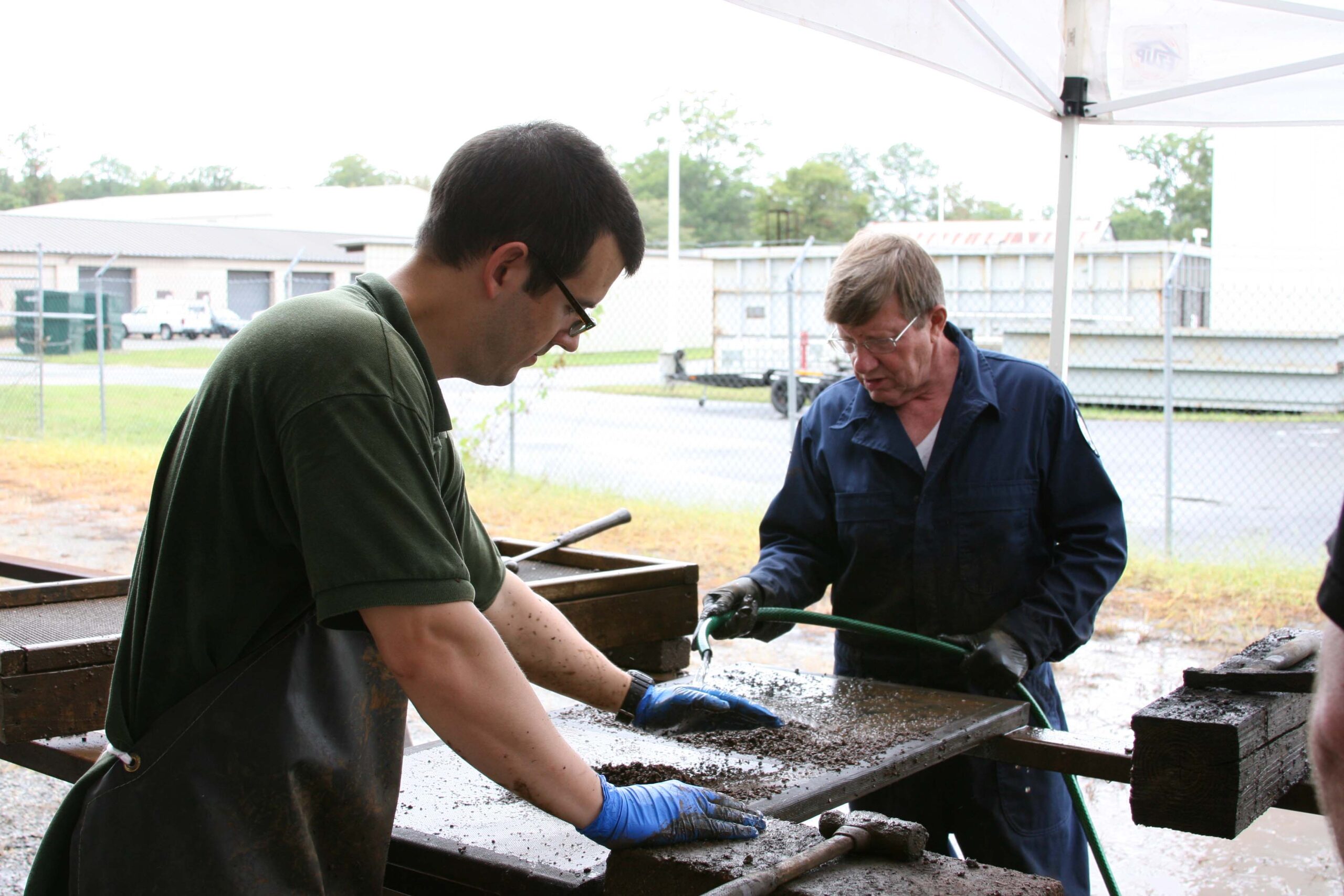
So, at this point you may be asking yourself, “Hey Will, if the large chunks of material do not pass through the upper screen, what happens to them?” I am so glad you asked!!! In the image below you can see Mike carefully breaking up chunks of concreted material with a hammer. Once in smaller pieces, the material will then be passed through the screens a second time.
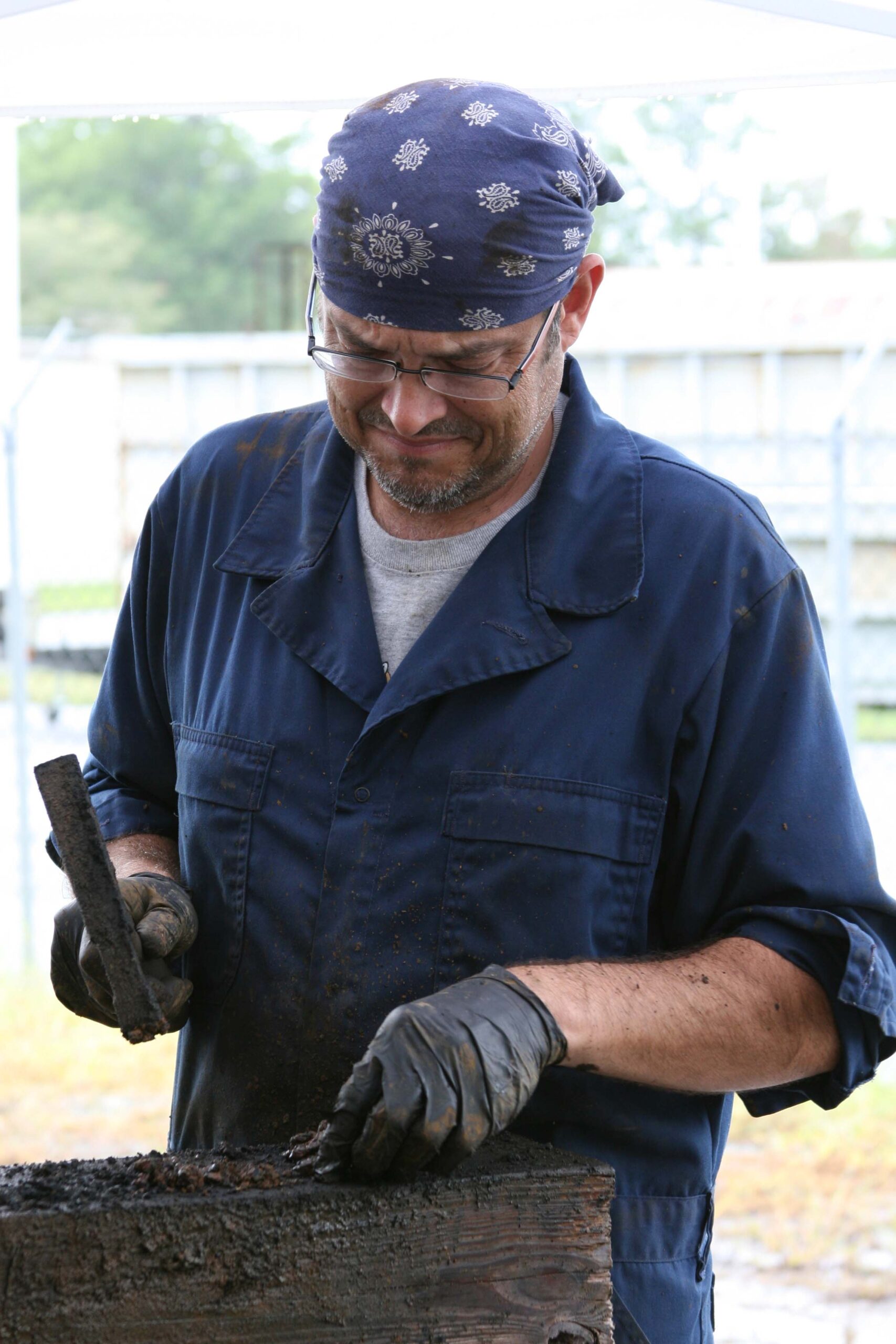
Overall the screening process is slow and tedious, but we do find stuff!!! The image below shows a fragment of glass recovered by Elsa.
